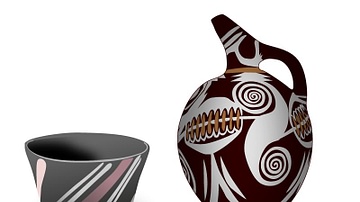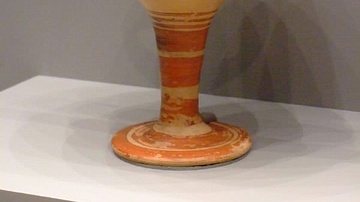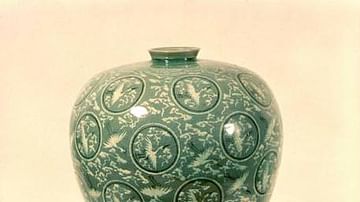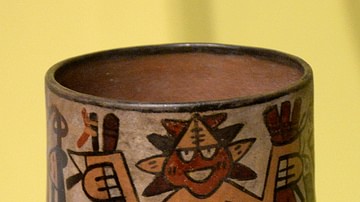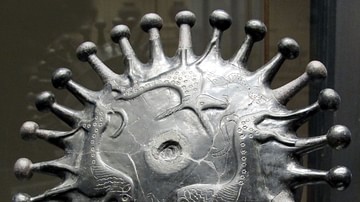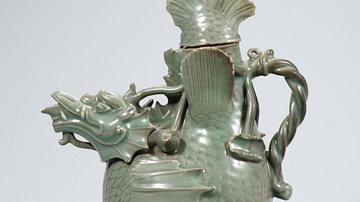Pottery is the great survivor of history. Pottery vessels have rarely ever attracted tomb robbers and the material can not be reused like bronze or gold. Even if smashed to pieces, pots can be painstakingly put back together again and clay is impervious to damp, mould, insects or even time itself. And pottery is plentiful - rubbish dumps, wells, and tombs the world over are rich sources of this everyday material. Pottery can be used to date archaeological sites, reveals long-forgotten trade links, the decoration can show artistic evolution within cultures and it often reveals details of everyday life from clothing to religious rituals, from eating habits to now-lost versions of otherwise well-known myths. Finally, the finer pieces of pottery are artworks in themselves, revealing sophisticated firing techniques and exquisite painting skills.
In this collection, we look at the pottery of some of the most famous producers of wares in history such as the striking black figures on ancient Greek pottery, the three-dimensional models in clay beloved by the Etruscans and, perhaps the two finest examples of the ceramic arts ever produced, Celadon pottery from Korea and Ming dynasty porcelain.
The Marine style, perhaps, produced the most distinctive of all Minoan pottery with detailed, naturalistic depictions of octopuses, argonauts, starfish, triton shells, sponges, coral, rocks and seaweed. Further, the Minoans took full advantage of the fluidity of these sea creatures to fill and surround the curved surfaces of their pottery in a truly unique artistic style which effortlessly conveys the obvious love these island people had for the sea.
